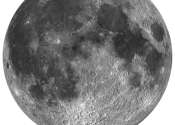NASA scientists find depletion of halogens due to giant impact
It's been more than 50 years since the Apollo missions, and in that time, chemical analyses of the recovered lunar materials have revolutionized our understanding of planetary materials. One of the major findings as a result ...









